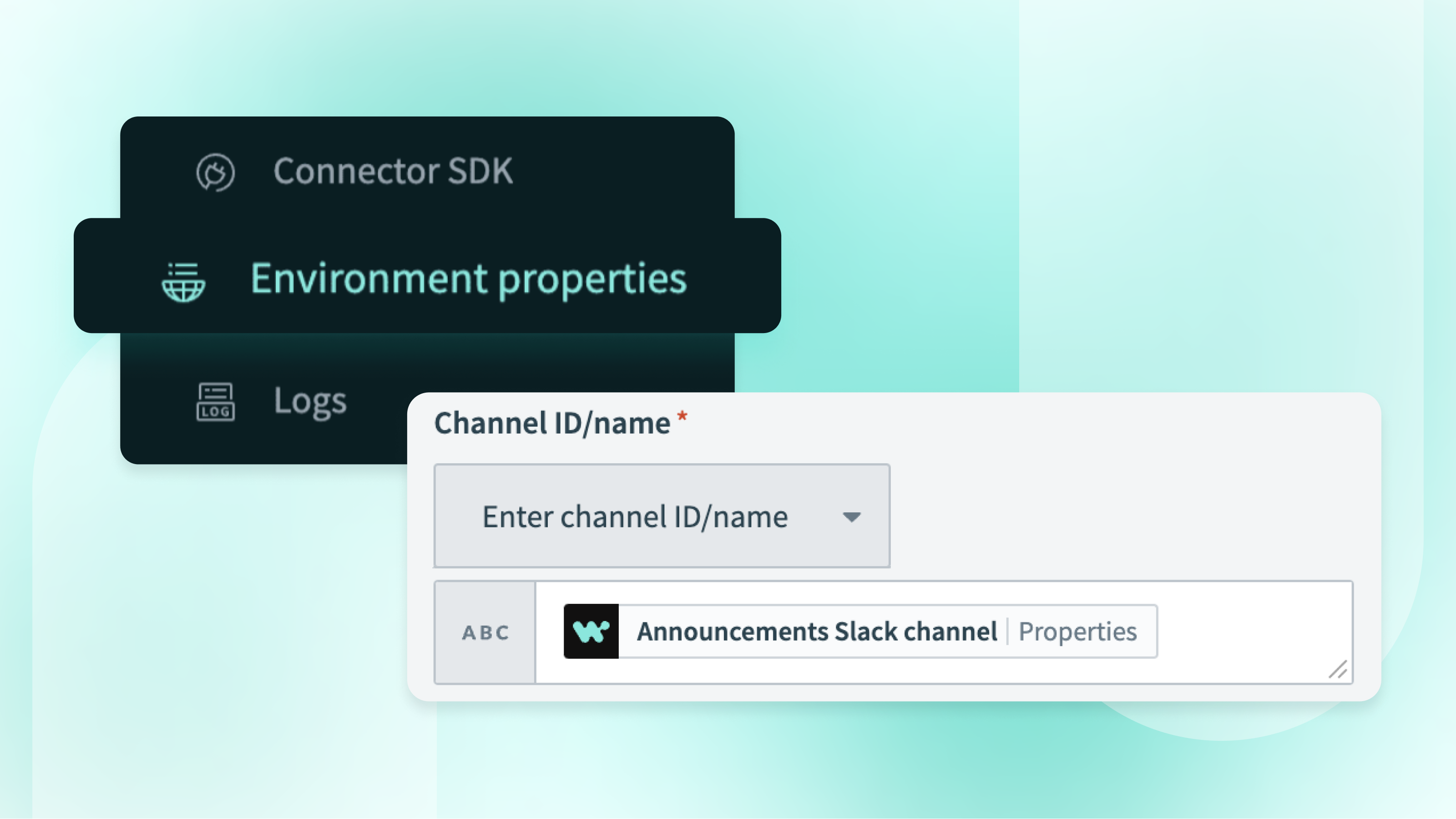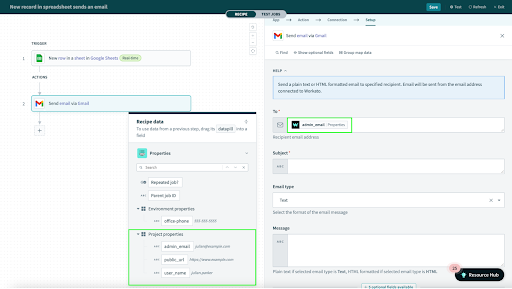Boost efficiency with environment and project properties

Properties are a great way to build standardization and consistency into your recipe design. Both environment and project properties are name-value pairs that store recipe configuration parameters for use in recipes, similar to global or project-based variables.
Prefer video? Check out this segment of our recent Product Hour:
Environment vs. project properties
In use, environment and project properties accomplish the same goal – pulling variables from a centralized location into recipes. The real difference is the scope of access:
- Environment properties are accessible from any recipe in the environment. Environment properties are also known as environment variables or configuration variables.
- Project properties are accessible only to the specific project where they are configured. Access to the properties is controlled by project-level access.
When should I use properties?
Imagine this: you’re in charge of several projects that send Slack messages to a team channel as updates are made in your CRM. Your team now wants to update the channel name to reflect some organizational changes, which leaves you wondering: do I really need to sift through dozens of recipes to update the channel name everywhere?
If you use properties, no! Properties are most useful for references that are reused across multiple recipes, like channels or emails; if it’s a one-off automation or the only time the value is used, it’s probably not worth setting up as a property yet.
Let’s consider a Revenue Operations project, where the goal is automatically generating and posting summaries of closed Salesforce opportunities, for both wins and losses. How could the project team utilize both types of properties?
Slack channels
Slack channels can be unwieldy, and if you are sending notifications or prompts via Slack, you want to make sure you’re referencing the right channel and reaching the right audience.
Environment property: The company-wide #announcements channel, where all new closed deals and company changes should be announced. Used in many projects, whenever the project teams need to update the company.
Project property: The project team’s #project-deal-summary channel. In the development and launch phases, the team would like error messages from all recipes in the project to display here so they can quickly triage and fix.
Admin and project lead email addresses
Nothing is more annoying than a typo in an email address that causes communications to be missed. Using properties ensures that recipes use a consistent email address, and can dynamically adjust if an email is updated.
Environment property: The email alias for competitive insights (competitive@acme.com); for each deal that is marked Closed Lost with a known competitor, a recipe is set up to send a deal intelligence summary to the competitive analysis team. This email alias is used for this deal summary project and also used for a monthly competitive newsletter, so it makes sense to bubble up to an environment property.
Project property: The project leader’s email address. In the development and launch phases, they want to receive an email with the output of each closed deal to be able to forward specific deals to executives who prefer email communication.
Generative AI prompts
Prompt engineering is an art and a science – maintaining a clear prompt for repeated tasks drives consistency in the outputs, and helps your business understand what you’re trying to convey.
Environment property: Company-wide instructions that the Business Technology or IT team wants to include in any enterprise-level AI project, such as relevant business context or keywords to avoid. Best used in conjunction with another prompt to build an optimal output.
Project property: Instructions for the LLM to interpret the deal inputs, such as structure of the output or what details to emphasize.
How do I use properties?
To use properties in a recipe, drag or select the named values from the data tree when building, under Properties > Environment properties or Properties > Project properties. As mentioned earlier, project properties are scoped to the specific project, and will not be accessible from other projects, while environment properties are available to all projects in the environment.
Security and property limits
Workato enables you to set granular permissions for both project properties and environment properties using role-based access control (RBAC) by creating a custom role.
Project and environment property limits depend on your account configuration. Contact your Customer Success Manager for more information about your property limits.

